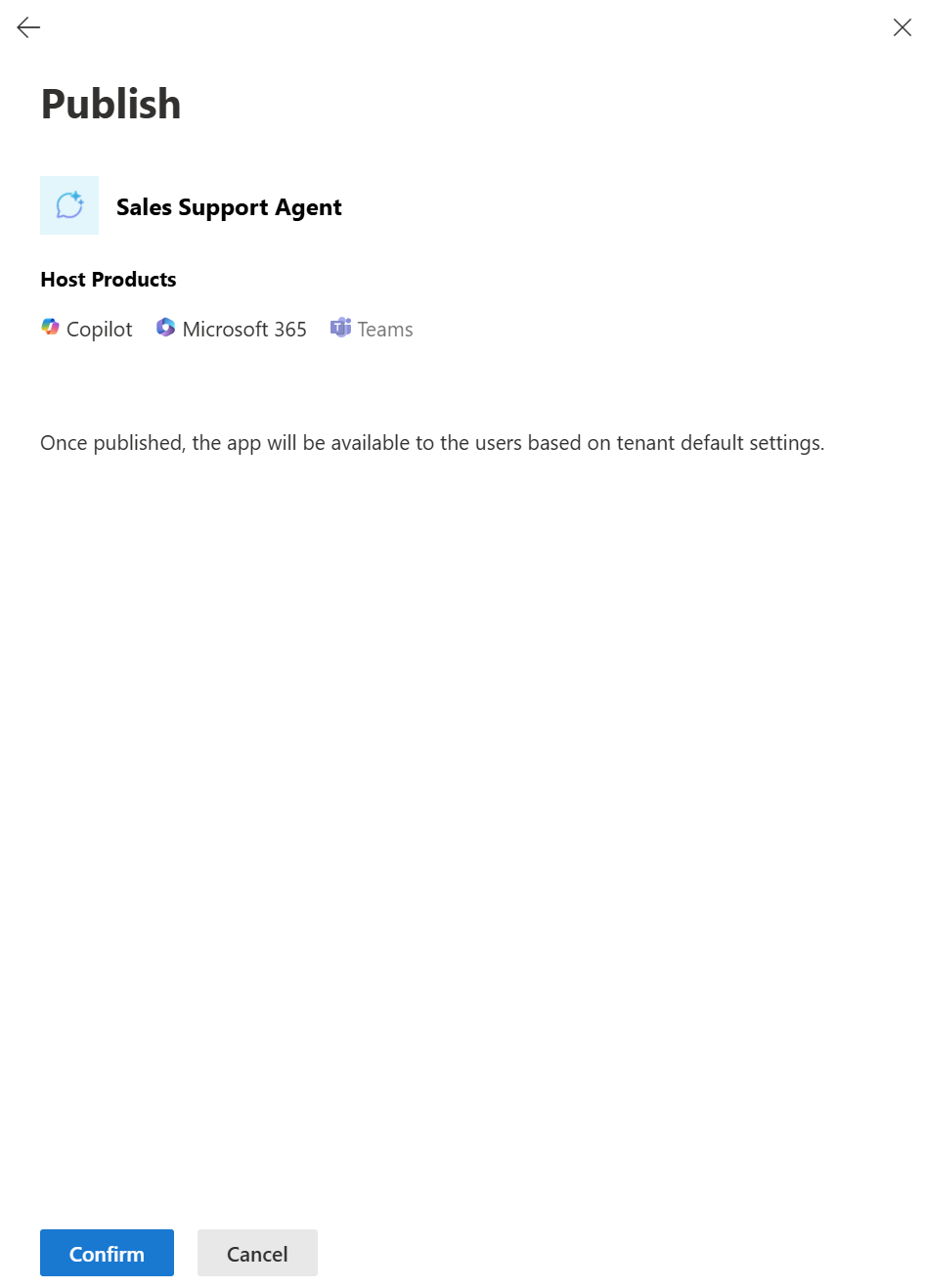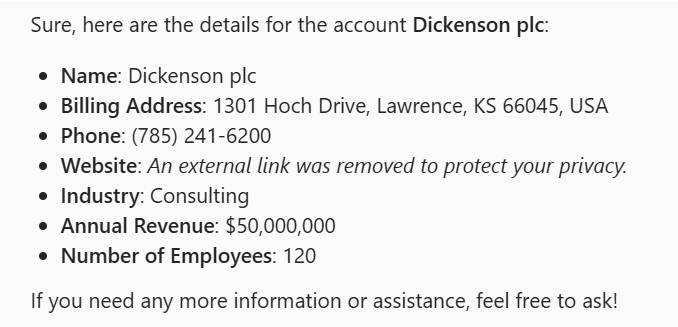Table of Contents
summary lede: Integrating Salesforce with Copilot for Microsoft 365 revolutionizes sales operations by automating repetitive tasks and providing real-time insights. This powerful integration enhances team collaboration and leverages AI-driven analytics to personalize customer interactions. By streamlining workflows and utilizing predictive analytics, sales teams can stay ahead of trends and make informed decisions. Seamless access to Salesforce data within Microsoft 365 allows the team to focus on high-value activities without switching platforms. Ultimately, this integration drives productivity and success in sales operations.
Chat on your Salesforce Data without leaving your Microsoft 365 environment (video without sound)
A comparison of Microsoft 365 Copilot combined with a Connector to Salesforce and pure Salesforce with Agentforce.
Microsoft 365 Copilot with Salesforce Connector
When you integrate Microsoft 365 Copilot with the Salesforce connector, you get a seamless experience that leverages the capabilities of both platforms. Here are some key functionalities and the data you can use:
-
Integration with Microsoft Office Apps: Copilot can be integrated into Outlook and Teams, allowing you to access Salesforce data directly within these apps. For example, you can view and update Salesforce records, create new records, and get insights without leaving your email or chat environment. The data you can use includes contacts, opportunities, leads, cases, and accounts from your Salesforce instance. Additionally, you can extend the capabilities of Copilot using data from an extensive ecosystem of connectors provided by Microsoft, including third-party data sources.
-
Enhanced Collaboration: Using Copilot in Teams, you can automatically generate meeting transcripts and summaries. This helps you keep track of discussions and decisions made during meetings, making it easier to follow up on action items. The data used here includes meeting details, transcripts, and summaries.
-
Unified Search: With the Salesforce Microsoft Graph connector, you can simultaneously search across your Salesforce data and Microsoft 365 content. This unified search experience helps you find relevant information quickly, whether in an email, a document, or a Salesforce record. The data you can use includes indexed Salesforce objects like contacts, opportunities, leads, cases, and accounts. You can also integrate third-party data sources using Microsoft Graph connectors.
-
Automated Workflows: Copilot can leverage Power Automate to create workflows integrating Salesforce data with other Microsoft 365 services. This can help automate repetitive tasks and streamline business processes. The data used here includes Salesforce records and any other data from Microsoft 365 services that you integrate into your workflows. You can also use third-party data sources through Power Platform connectors.
Microsoft-Based Autonomous Agents
Microsoft-based autonomous agents, particularly those created using Copilot Studio, offer several advanced capabilities:
-
Customizable Agents: You can build and manage autonomous agents from scratch using Copilot Studio. These agents can understand the nature of your work and act on your behalf, providing support across business roles, teams, and functions. For example, an agent could help manage your calendar, send reminders, and draft emails based on your preferences. The data used includes work data in Microsoft 365 Graph, systems of record, Dataverse, and Fabric. You can also extend the capabilities of agents with knowledge from third-party data sources using Copilot connectors.
-
Workflow and Automation Integration: Agents can leverage existing workflows, automation, and APIs to complete tasks efficiently. This includes using Power Automate to create workflows integrating with other Microsoft 365 services. The data used includes any integrated data sources and workflows. You can also use third-party data, like Salesforce sources, through Power Platform connectors.
Salesforce with Agentforce
Agentforce is Salesforce’s solution for building and managing autonomous agents. Here are some key functionalities and the data you can use:
-
Autonomous Agents: Agentforce allows you to create AI-powered agents to handle tasks across various business departments, such as sales, service, marketing, and commerce. For example, an agent could manage customer inquiries, process orders, and provide personalized recommendations. The data used includes structured data (e.g., Salesforce records) and unstructured data (e.g., emails, voice memos) processed through the Vector Database in Data Cloud. You can integrate third-party data sources using custom actions built with Apex or Flow.
-
Declarative Configuration: Agents can be built using a declarative interface, making it easy to configure them without needing extensive coding knowledge. The data used includes any data sources connected to the agents.
-
Real-Time Data Access: Agents can connect to any data source and use it in real time to plan, reason, and evaluate tasks. The data used includes real-time data from connected sources. You can also use third-party data sources through custom actions built with Apex.
-
Workflow and Automation Integration: Agentforce agents can leverage existing workflows, automation, and APIs to complete tasks efficiently. The data used includes any integrated workflows and APIs. You can also use third-party data sources through custom actions built with Apex.
Comparison
When comparing Microsoft 365 Copilot with Salesforce Connector and Microsoft-based autonomous agents to Salesforce with Agentforce, there are several key differences:
When using Microsoft 365 Copilot with the Salesforce connector, you get several unique benefits within the Microsoft Office family:
-
Seamless Integration: Access and update Salesforce data directly within Outlook and Teams, enhancing productivity by reducing the need to switch between applications. The data includes Salesforce records like contacts, opportunities, leads, cases, and accounts. You can also integrate third-party data sources using Microsoft Graph connectors.
-
Meeting Transcripts and Summaries: Automatically generate transcripts and summaries for Microsoft Teams meetings, making it easier to keep track of discussions and follow up on action items. The data used includes meeting details, transcripts, and summaries.
-
Unified Search Experience: Search simultaneously across Salesforce and Microsoft 365 content, helping you find relevant information quickly and efficiently. The data used includes indexed Salesforce objects and Microsoft 365 content. You can also integrate third-party data sources using Microsoft Graph connectors.
-
Automated Workflows: Use Power Automate to create workflows integrating Salesforce data with other Microsoft 365 services, streamlining business processes and reducing manual effort. The data includes Salesforce records and any other data from Microsoft 365 services that you integrate into your workflows. You can also use third-party data sources through Power Platform connectors.
By leveraging the integration between Microsoft 365 Copilot and Salesforce, you can enhance your productivity and collaboration within the Microsoft Office family while benefiting from the powerful CRM capabilities of Salesforce.
Motivation - in short
Integrating Salesforce into Copilot for Microsoft 365 can significantly enhance your sales operations. Here are some key reasons and steps to perform the integration in Copilot Studio:
- Enhanced Productivity: Automate repetitive tasks, allowing your sales team to focus on high-value activities like customer engagement and closing deals without switching platforms.
- Real-Time Insights: Access real-time data and insights from Salesforce, helping your team make informed decisions and strategize effectively. These insights are at your fingertips directly in Microsoft 365, where you communicate with your customers.
- Improved Collaboration: Seamlessly integrate with Microsoft 365 tools like Outlook, Teams, and Word to enhance communication and collaboration. e.g., Seamless access to Salesforce data or other 3rd party data directly within Microsoft Teams or Copilot chats in your browser.
- Personalized Customer Interactions: Use AI-driven insights to tailor interactions to individual customers, improving relationships and increasing sales success. Always have the right information at your fingertips to answer customer questions.
- Streamlined Workflow: Embed Copilot directly into the Salesforce desktop, making it easier for agents to manage tasks efficiently.
- Predictive Analytics: Analyze historical data to predict sales trends and suggest outreach strategies, helping your team stay ahead of the curve.
7 Steps to Generate a Copilot Agent with Salesforce Connector
Access Copilot Studio
- Open the Microsoft 365 Copilot app and select “Work.”
- In the right rail, choose “Create agents.”
 Create a new agent in Microsoft 365 Copilot
Create a new agent in Microsoft 365 Copilot
or
- Go to the Copilot Studio website and select Microsoft 365 Copilot and than “Agents” and “New Agent”.
 Create a new agent in Copilot Studio
Create a new agent in Copilot Studio
Describe Your Agent
- Use the “Describe” tab to create your agent using natural language. Provide details about the agent’s purpose, such as “Salesforce Sales Support Agent.”
 Start with a prompt
Start with a prompt
 Give it a name
Give it a name
 Refine the description
Refine the description
Alternatively, switch to the “Configure” tab for more precise control over the agent’s settings.
Configure the Agent
- In the “Configure” tab, set the agent’s name, description, and instructions (if not done before).
- Add an icon and any specific capabilities you want the agent to have.
Set Up Actions and Knowledge Sources
Define the actions your agent can perform, such as retrieving sales data, updating records, or generating reports.
Add knowledge sources to ground the responses.
 Select an action
Select an action
 Connect the action
Connect the action
- configure all actions and set the action parameters, e.g.
 Configure the action
Configure the action
Test Your Agent
Use the testing tools in Copilot Studio to simulate interactions with your agent. Ensure the agent can successfully retrieve and process data from Salesforce.
 Test the agent
Test the agent
Publish the Agent
Once satisfied with the agent’s performance, please publish it on Microsoft 365 Copilot and Microsoft Teams. Ensure the agent is accessible to your sales team and integrated into their workflow.
- Publish the agent
 Publish the agent
Publish the agent
Approve the agent
 Approve the agent
Approve the agent



- add the agent to the copilot

- See the result by using the agent and ask account / opportunities-related questions



Conclusion
Integrating Salesforce with Copilot for Microsoft 365 is a game-changer for sales operations. By automating tasks, providing real-time insights, and enhancing collaboration, this integration empowers your sales team to achieve higher productivity and success. The step-by-step guide ensures a smooth setup process, enabling you to leverage AI-driven analytics and predictive insights effectively. Embrace this integration to transform your sales strategy and stay ahead in the competitive market.





Start the conversation